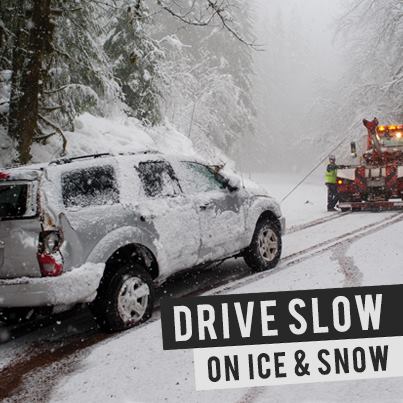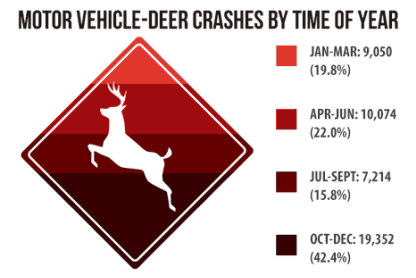December, 2015 Issue
1
Drive Slow on Ice & Snow

1. Accelerate and
decelerate slowly. Applying the gas slowly to
accelerate is the best method for regaining traction
and avoiding skids. Donít try to get moving in a
hurry. And take time to slow down for a stoplight.
Remember: It takes longer to slow down on icy roads.
2. Drive slowly. Everything takes longer on
snow-covered roads. Accelerating, stopping, turning
Ė nothing happens as quickly as on dry pavement.
Give yourself time to maneuver by driving slowly.
3. The normal dry pavement following distance
of three to four seconds should be increased to
eight to ten seconds. This increased margin of
safety will provide the longer distance needed if
you have to stop.
4. Know your brakes. Whether you have antilock
brakes or not, the best way to stop is threshold
breaking. Keep the heel of your foot on the floor
and use the ball of your foot to apply firm, steady
pressure on the brake pedal.
5. Donít stop if you can avoid it. Thereís a
big difference in the amount of inertia it takes to
start moving from a full stop versus how much it
takes to get moving while still rolling. If you can
slow down enough to keep rolling until a traffic
light changes, do it.
6. Donít power up hills. Applying extra gas on
snow-covered roads just starts your wheels spinning.
Try to get a little inertia going before you reach
the hill and let that inertia carry you to the top.
As you reach the crest of the hill, reduce your
speed and proceed down hill as slowly as possible.
7. Donít stop going up a hill. Thereís nothing
worse than trying to get moving up a hill on an icy
road. Get some inertia going on a flat roadway
before you take on the hill.
8. Stay home. If you really donít have to go
out, donít. Even if you can drive well in the snow,
not everyone else can. Donít tempt fate: If you
donít have somewhere you have to be, watch the snow
from indoors.

It's Deer Crossing Season
- Always wear a seat belt as required by state law
and drive at a safe, sensible speed for conditions.
- If a collision with a deer seems probable, hit it
while maintaining full control of your vehicle.
Donít swerve your vehicle to avoid striking a deer.
Brake firmly and stay in your lane. The alternative
could be even worse.
- Stay alert. Deer are unpredictable and can dart
out into traffic on busy highways.
- Report any deer-vehicle collisions to a local law
enforcement agency within 24 hours.
- Under Ohio law, the driver of a vehicle that
strikes and kills a deer may take possession of it
by first obtaining a deer possession receipt. The
permits are available from law enforcement or state
wildlife officers and from local Division of
Wildlife district offices.
|



